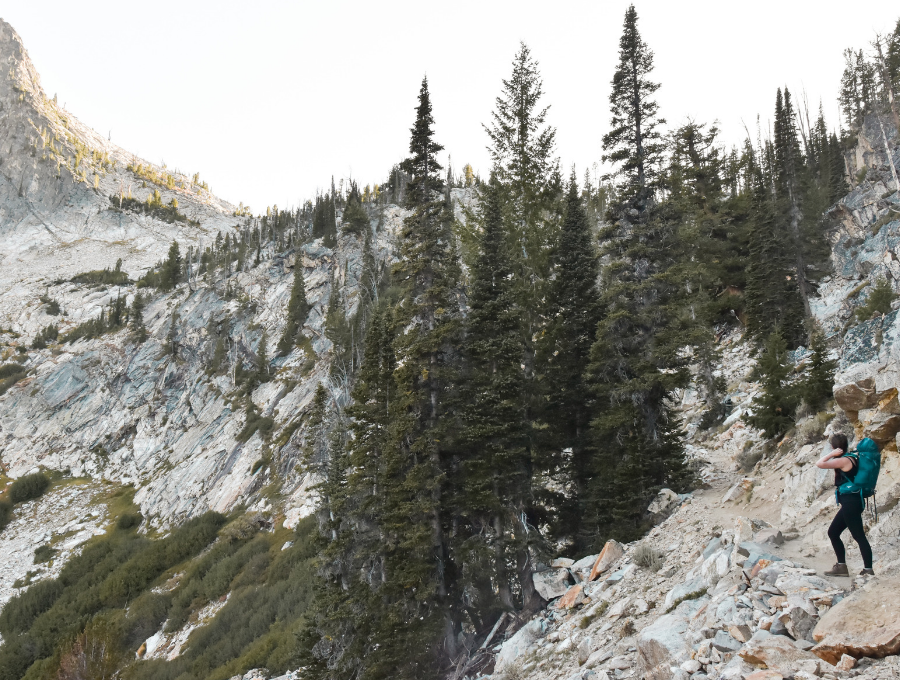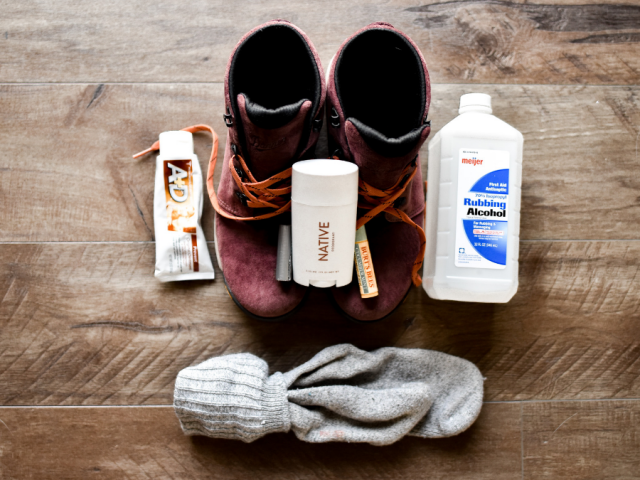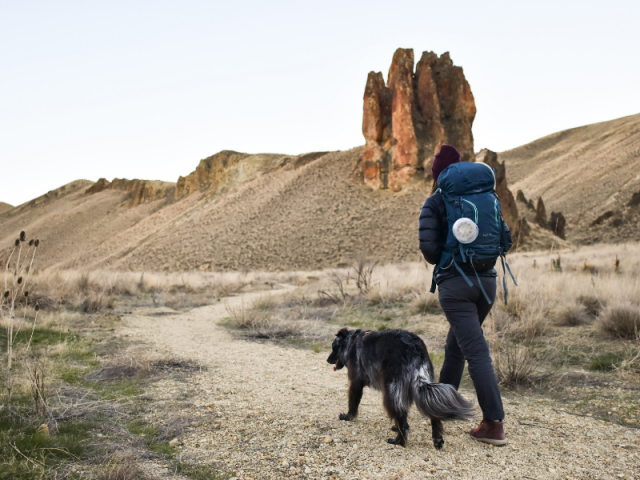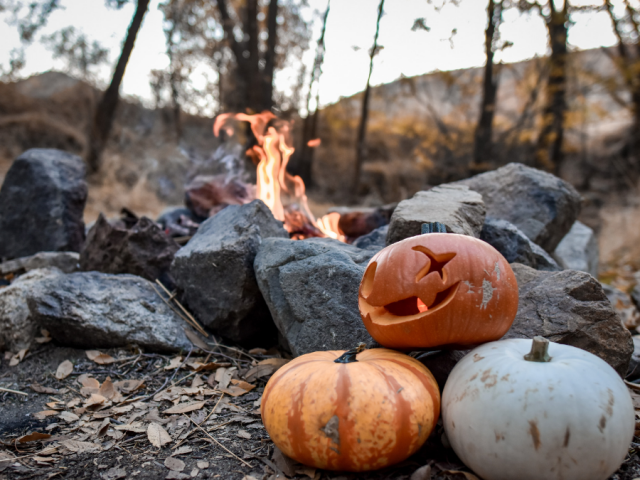We’ve come a long way, baby.
But did you know that even now, in 2020, it’s estimated that 9 out of 10 adventurers are unaware of their impact on the outdoors? That’s why the goal of Leave No Trace is to educate people about how to enjoy nature ethically, in a non-shamey sort of way.
Because, believe it or not, yelling at someone to stop being terrible is actually pretty counter-productive and does not encourage them to better themselves. Who knew?
More often than not, people mean well – they just haven’t had the opportunity to learn. I honestly can’t even tell you how many photos or memories I look back on and think “Wow… WHAT was I thinking?!”. Sorry, Nature 🙁
And that’s what inspired me to create this guide for my readers. Because Leave No Trace hasn’t in any way “hindered” the fun of being outdoors for me – it’s actually enhanced it! I feel way more connected to nature, have way cooler experiences (with wildlife and otherwise) and always have all the useful (and useless, but fun) gear I need to make an amazing adventure.
But before we get into the full list of the 7 Leave No Trace Guidelines and what they really mean for the everyday outdoors-person, there’s a few things to keep in mind:
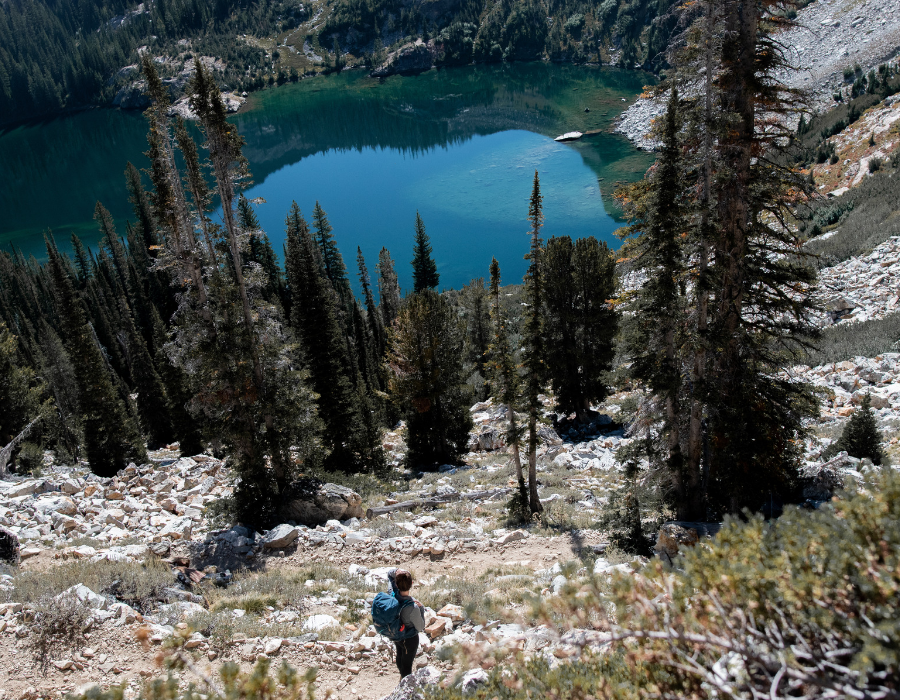
Leave No Trace Principals are “Guidelines”. Not hard-and-fast rules.
In a perfect world, we would have exactly zero impact on the environment we occupy.
This would mean no trails, no campsites, nada.
But of course, that’s just not practical. In fact, it’s not even a “perfect” scenario, really.
As people, it’s our duty to care for the Earth. And the best way to get people to care about the Earth, is to show them it’s beauty and worth.
Anyone who keeps up with my blog (or has read my About Me) knows that it’s my primary GOAL to encourage people to enjoy time outdoors. And although mental/physical heath benefits are a huge reason for this, an even bigger reason is that I want to create a larger community of responsible travelers. I believe that spending time outdoors can encourage people to protect the planet.
Of course, we should follow Leave No Trace principals wherever, and whenever possible. But don’t let them deter you from enjoying your time in nature! There are certainly scenarios where some principals can’t possibly be followed to the letter, and that’s okay! We can’t be 100% untraceable – we’re not Bigfoot. So don’t beat yourself up if you accidentally step on a mushroom, okay? Just do your best and be kind to others who are still learning.
And if you see a better way to do something, by all means – share with the group! Which brings me to my next point…
As we evolve, the Leave No Trace principals also evolve.
The 7 principals are not set in stone. The Leave No Trace Center for Outdoor Ethics is constantly researching and reevaluating the principals to make sure they are up-to-date with the latest research from biologists and leaders in outdoor education. So while it’s likely that no drastic changes will be made, it’s our duty to stay as current as possible so we know how to interact with our environment.
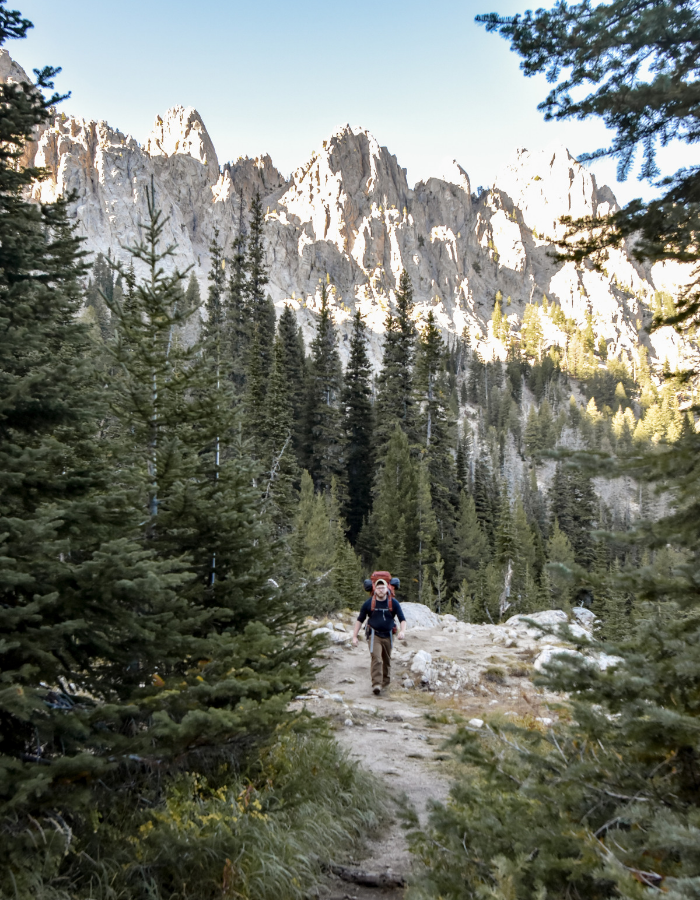
Now that we’ve covered the boring stuff, let’s get to MORE boring stuff! (Jk). Here are the 7 Leave No Trace Principals and what they mean.
1. PLAN + PREPARE
Believe it or not, your Leave No Trace responsibilities begin before you even leave your home! Whether you’re the group leader or just along for the ride, you should always properly plan and prepare (a.k.a. gear up) for your outdoor adventure.
8 main things to consider when planning and prepping:
- Skill Level of Participants. Can all members handle the activities planned and terrain/conditions encountered? Be careful not to plan anything that is too technical or advanced for anyone in your group.
- Rules and Regulations. Check Campfire bans, Private Land Boundaries, Pet Restrictions, Camping Rules, etc.
- Weather, Trail Conditions + Terrain Type. Some areas are also more susceptible to flash floods or lightening strikes – be sure to check on these things for the safety of the group.
- Wildlife. Familiarize yourself with wildlife in the area and research how to avoid and, if necessary, deal with encounters.
- Equipment. Make sure you have appropriate clothing + shoes, safety/first aid gear, proper cookware (using a Jetboil or camp stove is preferable to cooking over a campfire) and other gear to ensure you can meet Leave No Trace guidelines (such as a garbage bag to pack out waste).
- Food and Water. Pack in enough water and food for your entire group and disperse weight among group members according to what they can manage carrying. It would also be wise to find out if there is a usable water source. Some areas will require you to pack in all of your fresh water.
- Maps. Make sure you’re able to navigate the area upon arriving.
- Time Needed. Make sure you give yourself an excess of time to reach your campsite so as to avoid setting up in the dark or choosing an improper campsite.
Some examples of poor planning + How they negatively impact people and the environment:
- Not checking weather and/or susceptibility of an area to flash flood or lightening strikes. This can lead to personal injury.
- Failing to research campfire regulations and/or fire danger of an area. This can lead to a group setting up a campfire anyway, either illegally or just irresponsibly, in order to cook camp meals. In areas with fire bans, a camp stove should be used in lieu of a campfire.
- Not checking trail conditions. Hiking on muddy trails creates an uneven and scarred trail for future hikers. It also leads to people hiking off-trail to avoid getting mud on their boots and shoes.
- Misjudging the time needed. This can lead to rushed and improper or unsafe campsite selection. It can also lead to injury if your group is left hiking in the dark unexpectedly.
- Making poor water choices. Many people fail to pack in enough water or forget to check if there are water sources available for water filtration when their supply runs out. This can lead to dehydration or tampering with a water source in desert climates where water is in short supply for wildlife.
- Forgetting to pack in a trash bag. This is often the main reason that waste is left at a campsite or on a trail.
- Failing to pack appropriate gear. This often leads to injury or the tearing down of plant life in order to create “makeshift” gear.
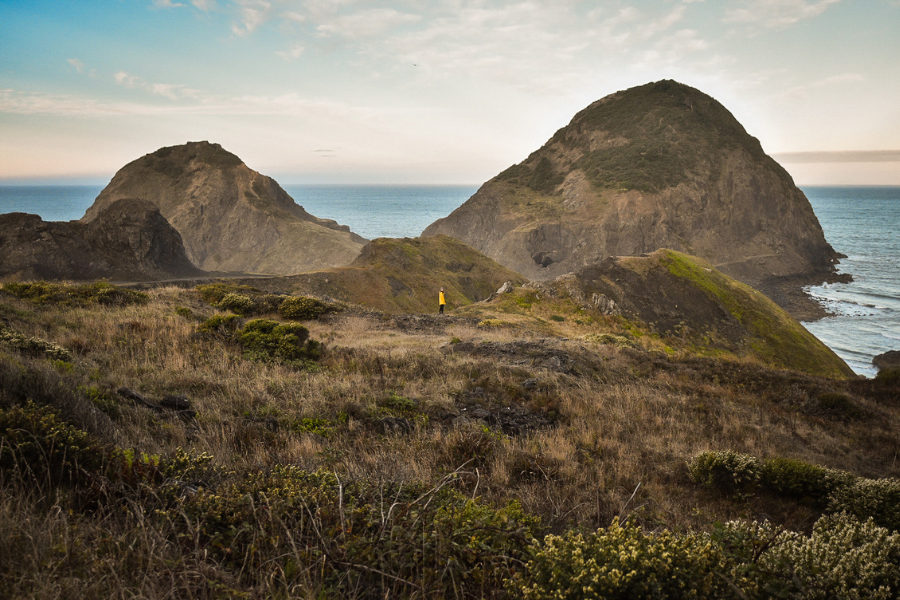
2. TRAVEL + CAMP ON DURABLE SURFACES
In the hiking and backpacking world, you’ll often hear the phrase “stay on trail”. That’s because this is the BEST way to limit our impact on the area we’re recreating in. But there’s more to the story than just that one rule! Leave No Trace principal #2 means so much more.
But before getting into the “How”, let’s look at the different terrain types you’re likely to encounter as well as their level of durability.
Terrain Types + Their Durability:
Rock, Gravel + Sand
HIGHLY durable. Just look out for lichens that grow on rock. They are more sensitive and important to the environment.
Ice and Snow
Mostly durable. Just make sure the depth is significant enough to protect the vegetation beneath it.
Vegetation
Durability Varies, but should be mostly avoided. Dry grasses are more durable and resistant to trampling than other forms of vegetation. Even better, choose areas with sparse vegetation where you can step around sensitive plant life.
Living Soil
VERY sensitive. Also known as cryptobiotic crust, living soil is often found in desert environments and is very sensitive to foot traffic. It’s full of living organisms that will appear black or raised from the sand. This soil traps moisture and provides a protective layer that prevents erosion. Avoid traveling on living soil at all costs.
Desert Mudholes and Puddles
VERY sensitive. These are extremely important water sources for desert wildlife and often contain their own little eco-systems Do not disturb these areas.
Now the How. How do we ensure that we’re sticking to the “tough stuff”?
To keep this as organized and easy-to-read as possible, we’re going to separate the “durability rules” into two sections:
1st: For those recreating in designated recreation areas (most common)
2nd: For those recreating in remote areas (remote means no real designated trails or campsites)
I should note that if you’re not a master of Leave No Trace guidelines yet (most aren’t, including me) then it’s best to stick to designated trails and campsites until you’re more experienced. Minimizing your impact on the environment is MUCH more difficult in remote areas.
Moving on.
“Durable” Leave No Trace Tips for Recreating in Designated Areas (A.K.A. The Typical Outdoor Trip)
- Stay on Trail. As much as possible. Don’t create trail short cuts (tempting as it may be…)
- Take trail breaks on durable surfaces. Surface such as those noted above that are free of delicate plant life
- Minimize trampling in off-trail scenarios. When heading off trail (for bathroom breaks, collecting appropriate firewood and exploring around camp) make sure you’re treading one of the durable surfaces listed above. Remember if you need to tread on plant life for whatever reason, you should avoid using the same route multiple times to minimize trampling.
- Limit group size or spread your group out. If you’re in a huge group, it might be smart to split into smaller groups. When hiking, it can keep things quieter for other hikers and wildlife and it also makes taking breaks much, much easier. When camping, it keeps tents spaced apart rather than creating one, large obvious “site”.
- Avoid creating your own campsite. If there is an obvious existing campsite, utilize it! Existing sites are usually pretty obvious – they’re flat areas that are free of any debris or vegetation. If there is no existing site, choose a durable surface that is vegetation-free and 200 feet away from any water sources. This 200 foot “buffer” leaves room for animals to comfortably come drink from lakes and streams.
- Allow yourself enough daylight. This comes back to Leave No Trace principle #1 (planning and preparing), but you should allow yourself an excess of time to set up your campsite at the end of the day. If you push your timeline too far, it often leads to poor campsite selection.
“Durable” Leave No Trace Tips for Recreating in Remote Areas
- Make sure you gots the smarts. I know, I know I said it before… but you should only visit remote areas if you are experienced and knowledgeable about Leave No Trace guidelines (which counts me out, fo sho!).
- Create your own campsite responsibility. When you’re in remote areas, you won’t likely find an existing campsite. If you do find one (completely free of vegetation and not requiring any alterations) by all means, use it! But otherwise, be sure to select a site that will endure minimal damage. Prioritize areas comprised of rock, sand and packed-down dirt for your campsite and camp kitchen site.
- Don’t alter the “campsite” area. Avoid moving rocks and plants – even moving fallen leaves away from your tent site is inadvisable since they can protect the vegetation underneath from trampling.
- Move the location of your tent every night. Continuing to relocate your tent will minimize the impact on any vegetation beneath your campsite.
- Change up your walking routes. Avoid taking the same routes to collect water, explore, or take bathroom breaks as this will create a new, unwanted trails and trample plant life.
- Don’t poop anywhere twice. Change up your bathroom sites.
- Watch where you walk. Take extra care to avoid crushing vegetation and opt to wear softer shoes than your hiking boots when hanging out around camp.
- Leave it how you found it. When breaking camp, triple check the area to make sure you haven’t left anything behind. Do your best to leave the area looking natural and untouched. If you leave your campsite looking like a campsite it could encourage other backcountry campers to use it as a site for their tent. Typically it’s good to use existing campsites, but in remote areas it’s best to keep it natural and “trample-free”. Reusing campsites will eventually destroy the vegetation beneath and create an obvious space altered by humans.

3. LEAVE NO TRACE OF NASTY GARBAGE – DISPOSE OF WASTE PROPERLY
Trash is, well… Trashy
You’ve probably heard the phrase “Pack it in, Pack it out” in excess. This is one of the better known Leave no Trace principles. But there’s more to this “principle” than just plopping food packaging into a garbage bag and hiking out. In this section, we’re going to go over 4 categories:
- Human Waste + Urine
- Soap + Sanitary Products
- Trash + Food Waste
Let’s start with the poopiest one of the bunch:
Disposing of Human Waste + Notes on Peeing in the Wild
The most popular and most-promoted method of pooping in the wild is the cathole.
How to Create, Poop in + Clean up your Cathole:
- First and foremost: Pick a spot that’s 200 feet away from water sources, trails and campsites.
- Select a spot where water runoff won’t flush feces towards rivers or lakes. This will minimize chances of contaminating important water sources.
- Search for an area that consists of organic soil. Organic soil contains organisms that will help speed up decomposition. Hint: This soil is usually dark and rich in color!
- Select a spot with heavy sunlight. Yet another helpful tool for speedy decomposition!
- Dig your hole at between 6 – 8 inches deep.
- POOP IN IT. I probably didn’t have to add that step.
- Either use natural toilet paper (popular materials used as toilet paper include stones, vegetation and snow) or, if using typical toilet paper, make sure it’s plain and non-scented toilet paper. Hint: Beware of biodegradable products as they typically contain MORE chemicals than traditional products. They decompose faster, but they release more chemicals. Not a great alternative, unfortunately.
- Bury your toilet paper in the cathole or, better yet, pack it out in a seal-able baggy. Don’t burn toilet paper.
- When finished, fill the hole with the same dirt you dug up and disguise it with natural materials.
- Make sure you don’t return to the same site to do your bidness. Cathole sites should be spaced out as much as possible.
NOTE: Though uncommon, some places require you to pack out solid human waste. Check regulations before visiting!
Quick Notes on Peeing (like a Leave No Trace Champ) in the Wild
Urine has less effect on the environment but there are still a few things to keep in mind:
- It may attract animals – choose a spot a good distance from your campsite
- Peeing on rocks, gravel or pine needles masks the scent a bit and minimizes it’s effects on soil
- Diluting urine with fresh water can further minimize effects and lessen the chance of attracting wildlife
Disposing of and Minimizing Impacts of Soap, Bug Spray, Sunscreen + Sanitary Products
How to Shower Safely in the Backcountry:
- BEST OPTION: Use wipes + dry shampoo instead of taking a full shower. Instead of washing hands with soap + water, use rinse-free hand sanitizer
- Do not rinse soap, bug spray or sunscreen off in any lakes, rivers, or other water sources
- Set up any “shower stations” 200 feet from water sources
- If using shampoo/soap, choose the most natural of the bunch but remember that no soap is better than “natural” soap. Avoid using soaps wherever possible.
Notes on bug spray, sunscreen + female hygiene products:
- Remember that even “reef safe” sunscreens and “natural” bug sprays are still full of ingredients that are foreign and harmful to the environment. Limiting use and avoiding swimming after use is the best approach!
- Tampons and pads should not be buried or burned and MUST be packed out.
Disposing of Food Waste, Dish Water and Trash:
Notes on Dishwashing:
- Carry water 200 feet away from the water source
- Wash dishes in a camp “kitchen sink”
- Avoid using soap, where possible
- Scatter dirty dishwater far away from camp and disperse it over a large area, don’t just dump it in one spot
Notes on Food Waste:
- Don’t burn food waste as the scent will attract animals
- Pack out food waste – even organic waste like banana peels and pistachio shells. These will attract animals and also detract from the natural beauty of the area
Notes on Trash:
- Don’t burn packaging as it pollutes the air
- Bring a large garbage bag (or a couple bags) so you can pack out your own trash and, potentially, trash leftover by former campers
- Bring a seal-able bag to pack up particularly smelly waste

4. LEAVE WHAT YOU FIND (EVEN THE COOL STUFF!)
The general concept is: “Take photos rather than souvenirs.”
I don’t know if it’s just me, but when I first heard principle #4 I thought it sounded super party-pooper-ish.
Like really? I can’t even take home a ROCK? It’s a rock.
It may sound super lame and like major overkill, but I promise there are REAL reasons for this principle. But among those reasons, the one that totally changed my mind was this:
If it brought you joy, it’ll bring someone else joy, too.
When you leave things as they are in their natural environment, it allows other adventurers to discover and enjoy them. That’s a nice thought, right!? You’re probably making some cute kid’s day.
But aside from that beautiful idea, here are some other reasons to snap a photo and leave behind that pretty souvenir:
- If everyone picked flowers or collected rocks, it would eventually deplete the area
- Even “dead” vegetation is food for animals. For example: Fallen maple leaves are a source of Vitamin C for pregnant deer!
- Many areas prohibit removal of plant life, antlers, and cultural items (such as arrowheads or pot shards)
- Let’s be honest… you’re probably not going to make any “nature crafts” when you get home anyway.
NOTE: Aside from removal of natural and cultural items – hammering or carving into trees and cutting down living vegetation are other things that fall under the LNT #4 category and should be avoided.

5. MINIMIZE CAMPFIRE IMPACTS
You Burn It, You Buy It!! (Office reference… naturally)
Of course, Leave No Trace prefers a campfire-free approach when camping and in these fancy, modern times campfires aren’t really a necessity. We can now boil/clean our water and cook our meals basically flame-free.
But as much as campfires are discouraged these days, there is still a time and a place for them. And even if they’re not “needed” per se, they’re just FUN. But before lighting up (lol) ask yourself the question:
Should I Build a Campfire or Nah?
You should always research before relying on a campfire for clean water and meals.
- Always check campfire rules and regulations specific to the area you’re visiting as well as the level of forest fire danger during the time of your visit
- Only create a fire where there is an existing fire ring
- Don’t cut down any living trees or plants OR any dead (but still standing) trees as they are home to little critters
- Avoid packing in firewood from far away – either buy from a local source or collect dry, downed wood near your campsite (when there is a sufficient supply)
- Do not build fires in high alpine areas, deserts and heavily used areas that are in short supply of firewood
- Don’t start a campfire too close to rocks (burn scars will remain on rock for many years)
- Only create a fire when you are able to constantly keep an eye on it – never leave a campfire unattended
- Make sure you have the appropriate tools (and amount of water) to extinguish your fire when you’re finished with it. Remember, if it’s too hot to touch it’s too hot to leave!
If the answer to the above question is YES – make sure you FULLY extinguish your campfire and make sure you don’t burn unnatural materials like toilet paper, packaging, etc.
If the answer to the above question is a big, fat NO – see below for alternative ways to cook in the outdoors!
Some LNT-Friendly Alternatives to Campfire Meals:
- Dehydrated Meals (rehydrated via Jetboil or Pocket Stove)
- Cooking over a Camp Stove
- Packaged, No-Cook Food

6. RESPECT WILDLIFE
It’s their home, so be kind!
How to keep yourself + all the creatures (great and small) happy and safe:
- Observe wildlife from a distance. Getting too close to wildlife is dangerous for you and stressful for the animal. I’m sure you’ve seen the same videos I have of people getting stabbed and trampled by bison – you DON’T want to be the next viral video. At least not for that reason. And even with prey (or not-so-dangerous) animals, approaching them can be harmful. Frightening them can quickly expend their energy that needs to be reserved for fleeing predators and gathering food for themselves and, potentially, their young. If you want to get a closer look at wildlife, consider purchasing a DSLR camera and a wildlife lens! That’s how professional photographers get those famous “close-up” photos of wild animals.
- Remain as quiet as possible (unless you’re in bear country). In bear country, it’s important to make your presence known to avoid spooking them an inciting an unfriendly encounter – but otherwise, keeping quiet is less stressful for animals in the area and can lead to some pretty awesome wildlife encounters (from a distance, of course).
- Don’t feed the animals and store food securely. Even non-predatory animals should be left alone to scavenge for their own food (from natural resources). Feeding animals causes them to become reliant on humans as a source of food and often the food they get from us does not contain nutrients that are essential to their diet. Keeping food away from animals is an essential component to keeping wildlife wild.
- Allow 200 feet of space between yourself and any water source. This allows animals to have a drink in the evening without getting scared off.
- Never assume a baby animal is abandoned. Many animals will leave their young while they go gather or hunt for food. If you’re unsure about the safety of an animal, contact a game warden or a nearby wildlife rehabilitation place.
- Remember that you are the guest and this is their home. Treat the area respectfully and enjoy 🙂

7. BE CONSIDERATE OF OTHER ADVENTURERS
Mind your manners, now!
It may seem like an obvious statement to some, but as a new explorer there might be some guidelines that are more easily overlooked. After all, everyone has their own reasons for communing with nature. For example, some may enjoy camping with music or snapping great photos while others may be trying to escape technology all together. Which brings me to Part 1 of Leave No Trace principle #7:
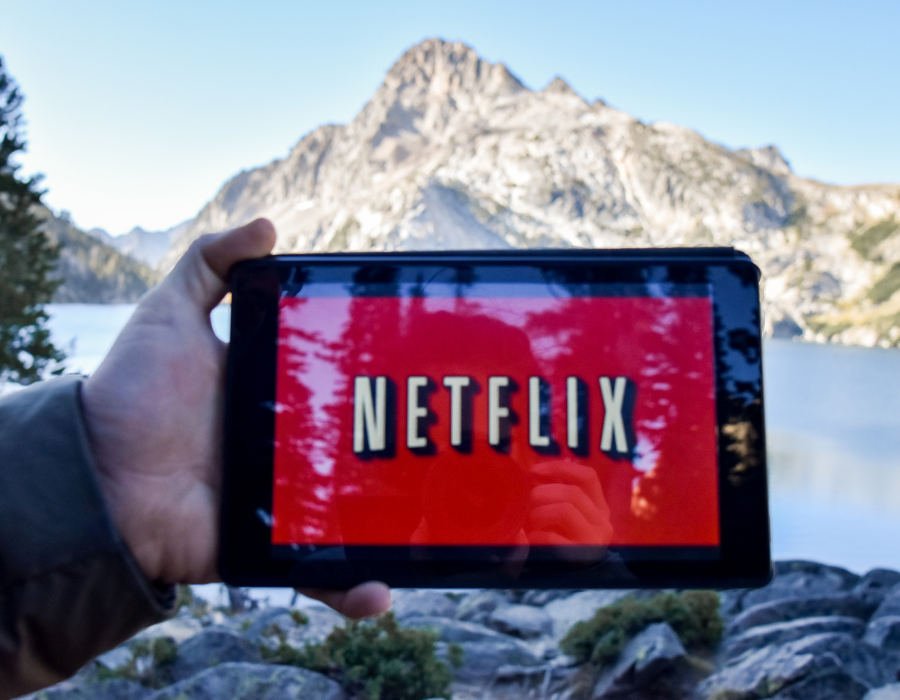
Technology + The Outdoors
A large percentage of outdoorsmen and women prefer to enjoy the peaceful, soothing sounds of nature music-free and T.V.-free. But hey, they don’t speak for everyone! Right?
I’ll be the first to admit that I often enjoy a good episode of The Office in my tent before bed. Mornings are usually my tech-free, quiet time and evenings I enjoy loading up on calories and easing the nighttime creepies with an uplifting show.
And there’s nothing wrong with that. (In fact, if that sounds like you’re cup of tea I have a guide on how to watch Netflix, Hulu, Disney+ and Prime Video offline, that you can read by clicking here!)
Everyone enjoys nature in their own way and everybody has their own hiking, camping, biking, climbing (etc.) rituals. As I’ve reiterated multiple times on my website:
Nature is for EVERYONE. And I will forever encourage people to get outdoors in whatever way suits them. As long as it’s respectful, of course 🙂
So if you’re into all the tech-y stuff, here are some tips on how to get your fix a super-polite, non-invasive way:
- For TV + Music: If no one is around, I say go for it with a Bluetooth speaker (this waterproof, shockproof one from Amazon has served me well). Otherwise, headphones are a must. Other people probably don’t want to hear your music and believe it or not, not EVERYONE loves The Office. I know, it’s weird. NOTE: If you like listening to headphones while hiking, just make sure you can hear people coming up behind you on the trail.
- For Cameras: This one isn’t as big of a deal. Just don’t snap any photos with other people in them (unless they ask for it) and make sure you set your camera to “silent” or “quiet” shutter mode if you have that option! Also, don’t make people feel rushed at viewpoints or in other pretty areas by setting up your camera and standing there awkwardly until they leave. That’s not a good look.
- For Drones: Many outdoor adventurers are super anti-drone. Make sure you check regulations (many parks and natural areas prohibit them) and if drones are allowed, stay as far away from other people as possible. Also, make sure not to harass or get close to any wildlife.

Pets + The Outdoors
Being outdoors is way more fun when you have a furry pal! And you’ll find that most outdoor people are also animal people – but this isn’t always the case. Keeping your pet under control (at all times, but especially around other people) is crucial. Show those non-animal people that your dog is a good boy with these easy and courteous tips:
- Check The Rules. Make sure you’re allowed to bring your dog with you and determine whether it is an on-leash or off-leash area. For on-leash camping areas, I absolutely LOVE using Ruffwear’s Knot-a-Hitch tether system. It keeps you hands-free and your dog tangle-free!
- Make Smart Leash Choices. If you’re headed to an off-leash trail but you know your dog (adventure cat?) has poor recall, keep him/her on leash.
- Don’t Let Your Pet Approach Other People. Even if your dog is friendly, you should always check with people before letting your pup approach them, unless they call him/her over themselves.
- Stay Alert. Even if your pet is great off-leash (typically) getting a glimpse of wildlife can make all that training go out the window. Stay aware of your surroundings and close to your buddy. If you see something that you know could be a potential trigger, quickly leash your pet so you can stay in control of the situation.
- Pick Up The Poop! I understand, animal poop in the wild seems like the most natural thing in the world. But not only does the smell bother other adventurers, dog poop can also introduce foreign, harmful bacteria to the environment.
Side Note: If you’re looking to start your dog out on the trails, check out my Guide to Training the Ultimate Hiking Dog!
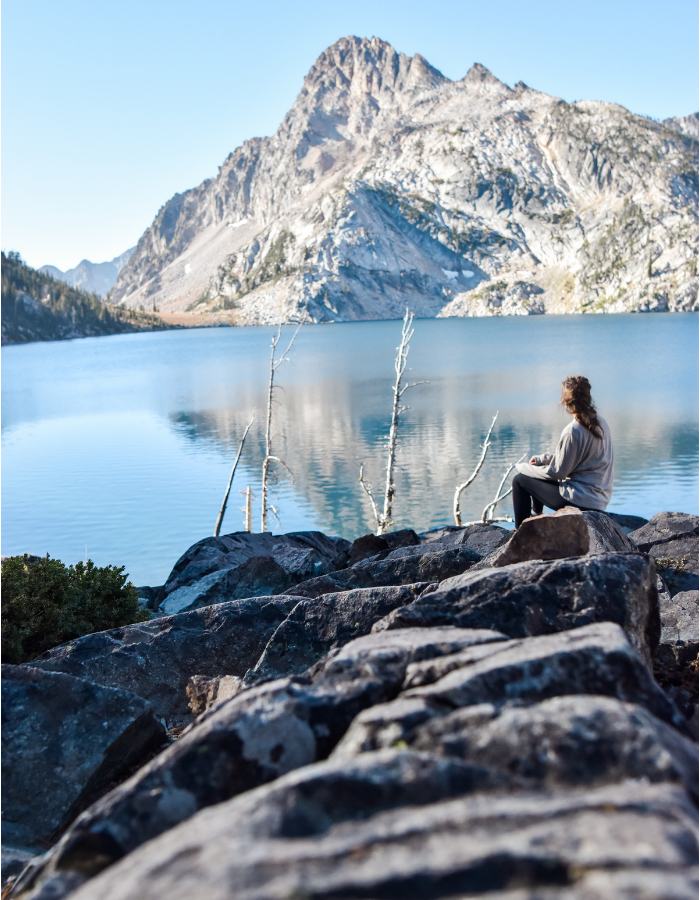
Trail Etiquette + Personal Space
One of the best things about being in nature is the solitude. We spend so much of our time around people (family, coworkers, spouses, friends) that you’ll find the majority of outdoorspeople enjoy the time away from others. They don’t hate you, they just need a lil’ break – okay?
Of course, when using popular campsites and trails, it can be difficult to stay completely isolated. But when you see other people in natural areas, there are a few things you can do to make it a more enjoyable experience for them:
- Yield to other trail users. Typically hikers going downhill are the ones who step off-trail to let other hikers pass by. If you see a biker approaching and you’re on foot, it’s polite to make way whether you’re going up or down hill.
- Take breaks away from the trail. Just make sure you’re on durable surfaces and not stomping on fragile plant-life.
- Choose secluded campsites. As far away from others as possible – and preferably campsites that are sort of “disguised” by trees or rocks.
- Keep noise to a minimum. As stated previously, non-natural noises can be bothersome to other people.
Did I miss anything? Share your Yoda-like Leave No Trace knowledge below!
SHARE THE SMARTS. PIN ME!


